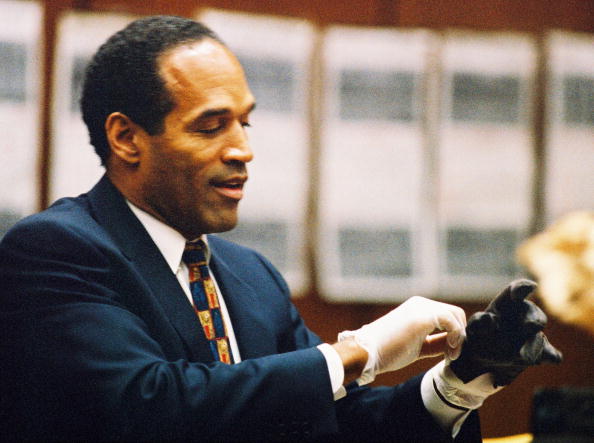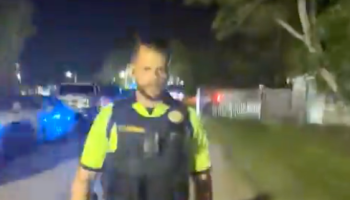Hurricane Earl sideswiped North Carolina’s Outer Banks early Friday, flooding the vacation islands but causing no injuries and only modest damage, then took aim at the gray-shingled cottages and fishing villages of New England, a weakened but still dangerous storm.
Earl dropped to a Category 1 hurricane with winds of 85 mph — down from a powerful Category 4 just a day earlier — as it wheeled over open water and made its way up the Eastern Seaboard. It was expected to reach New England late Friday night, passing perilously close to Cape Cod, Nantucket Island and Martha’s Vineyard at the start of the Labor Day weekend, the unofficial end of summer.
As of midday, no evacuations had been ordered in and around Cape Cod. But some vacationers canceled their hotel reservations and pulled their boats out of the water. Windows were boarded up. Lifeguards were pulled from duty. And people were warned to stay off the beach because of rough surf.
“We’re asking everyone: Don’t panic,” said Massachusetts Gov. Deval Patrick. “We have prepared well, we are coordinated well, and I’m confident that we’ve done everything that we can.”
Earl howled past the Outer Banks before daybreak, knocking out power to thousands and closing a road to a main bridge between the islands and the mainland. But the storm’s winds had dropped by then to 105 mph from 145 mph a day before. And its center stayed farther offshore than feared — 85 miles at its closest point.
Click here to view photos:
Hurricane-force winds, which start at 74 mph, apparently did not even reach the Outer Banks, the National Hurricane Center’s chief forecaster James Franklin said.
“We still think it will be a hurricane when it passes by Cape Cod,” Franklin said.
Earl was also expected to kick up high surf and dangerous rip currents up and down the East Coast, even along stretches where the storm remained well offshore.
FEMA prepared for the worst, stocking water and prepared meals in staging areas near the North Carolina and Massachusetts coasts. Supplies included 400,000 liters of water and 300,000 meals shipped to Fort Bragg, N.C., and 162,000 liters of water and more than 213,000 meals stored in Westover, Mass.
President Barack Obama declared a state of emergency for Massachusetts to make it easier for the government to provide disaster relief.
At the Hyannis Marina on Friday morning, Paul Tassinori, of West Yarmouth, was helping his neighbor, 83-year-old Norm Fasulo, take his 17-foot sailboat, Our Boo-Boo, to safer ground.
“Better safe than sorry,” Fasulo said.
Ellen McDonough of Boston and a friend were waiting in Hyannis on Friday morning for what was expected to be one of the last ferries to Nantucket before service was stopped. The two had long planned a Labor Day weekend getaway to the island.
“It’s not a three-foot snowstorm. I think us New Englanders are tough,” McDonough said. “We’ve had this weekend planned, and no hurricane is going to stop us.”
RELATED: Hurricane Earl, Tropical Storm Fiona To Hit New England Area
On Nantucket, people were warned not to go in the water.
“In fact, we’re encouraging people not to even go on the beaches on the southern parts of the island. One wave is all it takes to sweep someone away,” said Gregg Tivnan, assistant town manager.
On the Outer Banks, 1 to 2 feet of water covered roads in the community of Buxton on Cape Hatteras, pushing around plywood, a convenience store ice cooler, a garbage bin and other debris. A Jeep driving down the road had water up to its headlights. Carol Dillon said her home in Hatteras was surrounded by water and her daughter lost two cars in a flooded garage.
North Carolina Gov. Beverly Perdue said there was no serious damage and urged people to get back out for the Labor Day weekend to “have a little fun and spend some money.”
“Swiping the coast was always better than coming ashore,” said Mark Van Sciver of the North Carolina Emergency Operations Center. “We’re very grateful that the brunt of the storm passed us by.”
Some 35,000 visitors and residents on the Outer Banks been urged to leave the dangerously exposed islands at the storm closed in, but hundreds of hardy souls chose to wait it out in their boarded-up homes.
During its march up the Atlantic, Earl could snarl holiday weekend plans, with several flights already canceled and Amtrak service suspended in places.
Forecasters said Earl would stay 100 to 200 miles off New Jersey and New York’s Long Island as it made its way to New England. But the storm could have a punishing effect even from a distance: Earl’s hurricane-force winds extended 70 miles from its center, and tropical storm-force winds of at least 39 mph radiated out 205 miles.
At midmorning, Earl buffeted Virginia with rain and gusts up to 45 mph as it passed farther out to sea. Officials in the Maryland beach resort of Ocean City advised people to secure trash cans, lawn furniture and other loose objects. One hotel took the tops off the fake palm trees around its swimming pool. The city of Rehoboth Beach, Del., removed lifeguard stands from the beach.
In New York City, officials were on alert but said they expected to see only side effects of the storm — mostly rain and high winds, with possible soil erosion on the beaches and flooding along the oceanside coasts of Brooklyn and Queens.
RELATED: Hurricane Earl Batters Caribbean Islands; Threatens East Coast
















